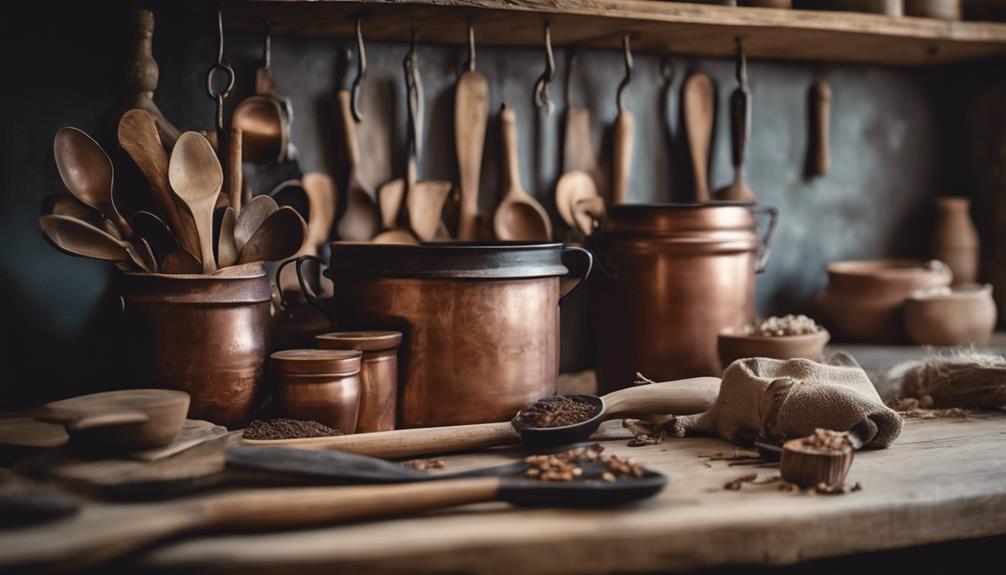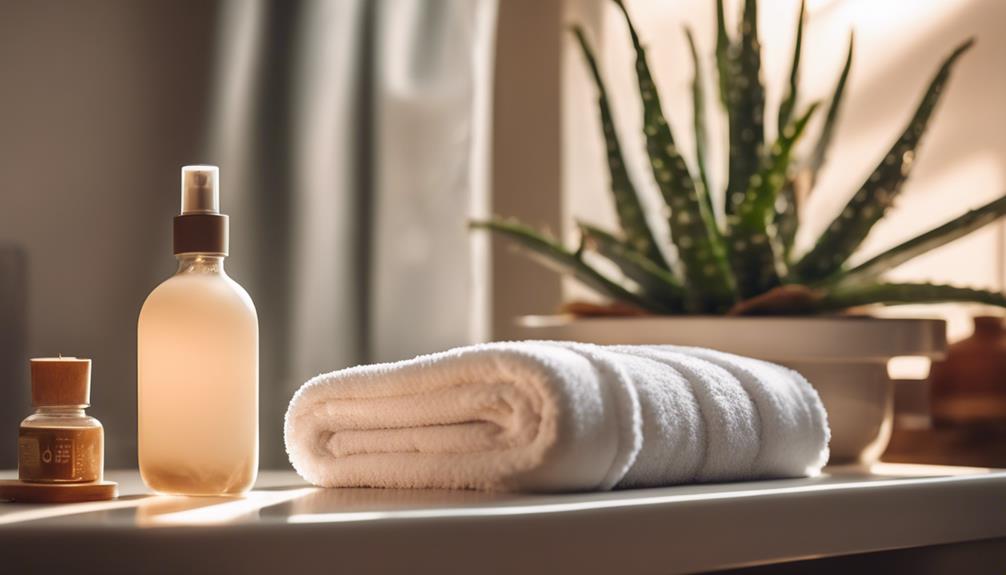Certain foods taste better in their country of origin because they are made with fresh, local ingredients that heighten your taste buds’ sensitivity. The local climate and soil enhance the flavors, while traditional cooking methods bring out their complex characteristics. Your palate is also influenced by cultural exposure, causing familiar dishes to have a deeper impact. Additionally, the emotional connections associated with these traditional flavors cannot be ignored. When you indulge in local cuisine, you are immersing yourself in a rich combination of history and community. However, this is just the tip of the iceberg – there is a lot more to discover about the factors that influence taste around the world.
Key Takeaways
- Local ingredients are often fresher and harvested at peak ripeness, enhancing their flavor profiles.
- Traditional cooking methods and techniques are deeply rooted in cultural practices, allowing for richer flavors.
- The unique climate and soil conditions of a region nurture distinct flavors found in local produce and seafood.
- Familiarity with local ingredients and dishes fosters a deeper emotional connection and appreciation for the flavors.
- Dietary customs reflect historical influences and environmental factors, shaping the unique taste of regional cuisines.
The Science of Flavor Perception

When it comes to enjoying food, the science of flavor perception plays a crucial role. Your taste buds don't work alone; they rely heavily on aroma to enhance what you experience. Genetic variations can influence how sensitive your taste receptors are, leading to different preferences among individuals and populations. This means what you love mightn't be the same for someone else.
For instance, the unique ingredients and preparation methods used in dishes like Red-Braised Pork Belly can create a rich and complex flavor profile that's deeply tied to its cultural origins.
Environmental factors, such as local ingredients and climate conditions, greatly shape the flavor profile of foods you encounter. When you eat a dish made with fresh, local ingredients, it often tastes richer and more vibrant than something prepared elsewhere. Additionally, traditional preparation methods can elevate flavors, creating a connection to the food origin that enriches your enjoyment.
Cultural exposure also plays a key role in shaping your palate. If you've grown up with certain flavors, you're likely to find them more appealing. Understanding the importance of a dish and its origins can enhance your flavor perception even further.
Cultural Influences on Taste

Cultural influences shape your taste in profound ways, affecting what you find delicious or unappealing. Your upbringing and heritage play vital roles in developing your palate, as familiarity with local ingredients and traditional cooking methods enhances your taste perception.
For example, the rich blend of spices in dishes like Mushroom Masala can evoke strong feelings of comfort and nostalgia for those who grew up with such flavors. You might notice that foods prepared with ingredients native to your region evoke stronger emotional connections, deepening your culinary experiences.
Dietary customs across cultures lead to unique flavor profiles that reflect historical diets and ingredient availability. For instance, the contrast between traditional and modern food preparations highlights how cultural pride influences your food preferences.
When you savor a dish that resonates with your roots, it often tastes better, thanks to those emotional ties. Research shows that populations develop distinct taste sensitivities shaped by their cultural exposure.
This means that the flavors you appreciate are often tied to your background and the stories surrounding each meal. Ultimately, the foods you cherish aren't just about nutrition; they're a celebration of your identity and cultural heritage, making them all the more delightful when enjoyed in their country of origin.
Ingredient Quality and Freshness

Tasting food in its country of origin reveals the undeniable impact of ingredient quality and freshness on flavor. When you savor local produce, you're experiencing ingredients harvested at peak ripeness, consumed shortly after, and bursting with enhanced taste.
The unique climate and soil conditions in these regions nurture distinct flavor profiles in fruits, vegetables, and herbs that you simply can't find in imported options. For instance, ingredients like cassava are staples in Brazilian cuisine, offering a unique texture and flavor that reflects the richness of the local soil.
In coastal areas, the access to fresh seafood guarantees prime flavor since fish and shellfish are caught and sold the same day. This freshness preserves their natural taste and texture, making every bite memorable.
Traditional methods of preparation and preservation, like fermentation or curing, rely heavily on high-quality local ingredients, further elevating the dish's flavor.
You'll also notice that regional cooking techniques, such as roasting or grilling with local wood, impart additional flavors that enhance the culinary experience.
It's the combination of ingredient quality, freshness, and these traditional practices that create a taste sensation, making every meal in its country of origin a delightful exploration of flavors you won't easily forget. Local produce and popular ingredients in fine dining, such as truffle oil, aged balsamic vinegar, and premium cuts of meat, often play a key role in elevating dishes to new heights of flavor. These ingredients, expertly paired with time-honored techniques, ensure that each bite is a celebration of both time-tested culinary expertise and the natural richness of the best seasonal staples. As a result, dining in its country of origin becomes not only a meal but also a memorable experience.
Traditional Cooking Methods

Experiencing traditional cooking methods in their native environments truly transforms your understanding of flavor. You'll notice how locally sourced ingredients elevate the flavor profile of dishes, making them vibrant and fresh.
For example, the delicate balance of flavors in dishes like Dorayaki (Red Bean Pancake) highlights how traditional Japanese sweets utilize simple yet high-quality components. Techniques like slow cooking and fermentation, prevalent in many cultures, develop complex flavors that modern processing often overlooks.
For instance, when you taste a dish cooked in a clay pot or a wood-fired oven, you appreciate how these specific tools influence the final taste, interacting uniquely with the ingredients.
Moreover, traditional cooking emphasizes seasonality, ensuring that you're enjoying ingredients at their peak ripeness and flavor. This connection to the land fosters a deeper appreciation for what you eat.
Many cultural practices surrounding food preparation, such as communal cooking, create a social connection that enhances your dining experience. Sharing meals prepared with love and care in a community setting not only brings people together but also deepens your understanding of the flavors rooted in tradition.
You'll find that these traditional cooking methods aren't just about the food; they embody the essence of a culture, enriching every bite you take.
Environmental Impact on Cuisine

The environment's influence on cuisine is profound, as local conditions shape ingredient availability and traditional recipes. When you explore a region's culinary landscape, you'll notice how local ingredients dictate the flavor profiles of dishes.
For instance, coastal regions thrive on fresh seafood, directly impacting their cuisine and creating unique tastes you can't replicate elsewhere. In Mexico, the use of fresh herbs and spices, as seen in dishes like Chilaquiles and Cochinita Pibil, showcases how the local climate and agriculture enhance traditional flavors.
In hotter climates, the use of spices often intensifies, not only enhancing flavors but also serving as a means of food preservation. The quality of local flora, including specific herbs and vegetables, can elevate the taste of traditional recipes, making them more vibrant and satisfying.
Cultural values surrounding food safety and preparation methods also play a significant role in culinary practices. These values influence how locals utilize their available ingredients, leading to dishes that truly reflect their environment.
You can see this connection when you savor a meal, as it embodies the essence of its surroundings, from the freshness of local produce to the techniques honed through generations. Each bite tells a story of place, emphasizing how intertwined cuisine is with environmental factors.
Frequently Asked Questions
Why Does Food Taste Better in Other Countries?
When you travel, local ingredients and traditional cooking methods enhance flavors, making food more enjoyable. Plus, cultural connections and the freshness of regional products often lead to a richer, more satisfying culinary experience.
Which Country Makes the Tastiest Food in the World?
When you think about the tastiest food, it often depends on your personal experiences and preferences. Each country boasts unique flavors and ingredients, so your favorite might just be a dish from your travels.
Why Does Food Taste Better in Italy?
Did you know that over 80% of Italian meals feature fresh, local ingredients? You'll find that food in Italy bursts with flavor, thanks to traditional cooking methods and regional variations that highlight the quality and freshness of ingredients.
Why Does Food Taste Better in Greece?
When you savor Greek food, you experience the freshness of sun-ripened ingredients and regional herbs. Traditional cooking methods enhance the flavors, creating a unique taste that connects you deeply to Greece's rich culinary heritage.
Conclusion
When you enjoy a dish in its country of origin, you're experiencing a unique blend of factors that elevate its flavor. For instance, studies show that 70% of taste is influenced by smell, and local environments enhance this sensory experience. Fresh ingredients, traditional cooking methods, and cultural context all play essential roles in how you perceive taste. So, next time you travel, savor those local flavors—you'll likely discover they taste even better than you remember!









